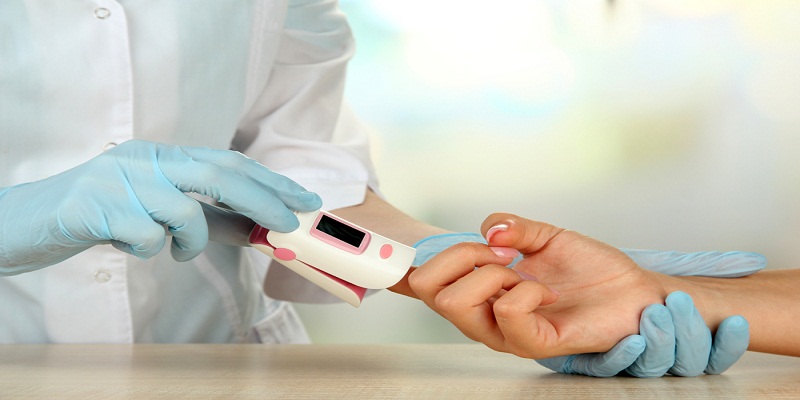A pulse oximeter is a medical device which is able to measure the amount of oxygen in a patient’s blood. The machine works by using two lights and different wavelengths. The oxygen carrying red blood cells in the body absorb the emitted light which is then measured by the machine which then gives a reading of the amount of oxygen in the patient’s blood.
Those suffering respiratory conditions or chronic medical conditions such as anaemia, heart disease and lung cancer should use. Children who suffer from chronic respiratory or breathing conditions will also benefit as their condition can be monitored more closely. Medical personnel and fire-fighters use this equipment to monitor patients during surgery and accidents. Oximeters are also suitable for scuba divers, pilots, mountain climbers and other athletes who find it a safe and convenient method to monitor their oxygenation levels.
If you are using this device in your home and find the reading to be below normal than you should go see your doctor. The reason for this is that your reading may have been affected by certain environmental factors or it could be a condition which needs treatment. The first conditions that you doctor will check for is hypoxia which can be fatal if allowed to continue. The first indicator of this condition is low blood oxygen levels. There are other symptoms that you doctor will be able to identify.
If there is a distinct change in the oxygen levels of the patient’s blood, a warning alarm is produced by the unit. Oxygen levels should not be below 95%. The use of oximeters has made it possible to detect variances as low as 1%. Prior to the use of oximeters, physicians would only become aware of oxygen starvation once their patient’s skin tone changed and this normally happened at around 85% of oxygen saturation in the body.
Pulse oximeters are normally used during surgical procedures particularly in cases where general anesthetics are used. This allows the physicians to monitor and assess the patient’s overall health. It is also used as a post-operative measure of observation. Nurses in surgical recovery wards use pulse oximeters to monitor the patient’s condition.
There is a number of different types of pulse oximeters available on the market, you can find out what these are and what their main differences are by reading below. To see the complete range of the best pulse oximeters, go to Review Gurus.
For the majority of people in the world, thought of having to go into hospital for any kind of medical reason strikes fear into them. Is this because the hospital itself is a scary place or is it because of the medical tests and examinations which have to be conducted?
The very thought of having any kind of intrusive examination would make most people nervous, and this is why the medical profession has developed a number of devices which not only makes the whole process of being in hospital more efficient but also helps make the patient feel a lot more at ease.
A pulse oximeter is one of these devices which has been developed in order to achieve such results and are being used throughout the medical world. You can look at this resource for the best pulse oximeters on the market.
What Exactly is a Pulse Oximeter?
A Pulse Oximeter is a device which allows the medical staff to monitor the oxygen saturation of a patient’s blood. The device itself is non-evasive which means that it is able to monitor such circumstances without the need of the patient have to have any injections or other medical insertions or for the need for blood to be withdrawn from the patient’s body.
The Pulse Oximeter uses a sensory device which is placed on part of the patient’s body. In the vast majority of cases this is usually a fingertip but has also been known to be placed on the earlobe. In the treatment of infants or very small children the device is able to be placed onto the foot of the patient.
This device does not cause any pain and simply uses light resistance to stay on the desired part of the body. A digital display screen will then show the medical staff how much oxygen is currently being carried within the patient’s blood.
This information is vital in allowing the doctors to see whether the patient’s heart, lungs and blood are all functioning together in order to delivery vital oxygen to various parts of the patient’s body.
How has pulse oximeter benefitted the medical profession?
Oxygen is one of the most vital things that a body needs in order to keep living and a pulse oximeter allows medical staff to quickly assess how much oxygen is in the patient’s body. This in turn helps make the whole medical process more efficient. The pulse oximeter is one of many devices which have been developed by the medical profession which have allowed for quick delivery of other treatment which in the most extreme of cases has resulted in lives being saved





